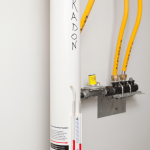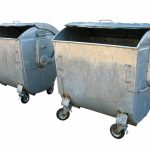Murphy’s Law is something that all shooters can relate to, and it basically states that “Anything that can go wrong, will go wrong.” This is why most serious shooters, or even those that just enjoy a day of out aiming at targets, make sure they have BUIS.
This acronym actually stands for Back Up Iron Sights, and they are commonly found on all weapons as a basic backup should your primary optic fail for some reason. These are not an expensive addition to your weapon, and they can allow you to continue to still accurately aim a weapon without having to call it a day and repair the scope.
Types to Consider
Depending on your preference and how often you will want to use these sights, you can choose from a fixed type of sight that stays stationary at all times, or the flip up designs that you can manually engage to use.
Some people, depending on their level of expertise and experience with their weapon may choose to combine the two and have flip up as either the front or back site and the opposite style as the other.
The type of scope or optics used on the weapon can also impact the BUIS configuration selected. Generally, with the fixed option you will look over the fixed iron sight to the optic, which becomes less and less of an issue the more you practice with the weapon.
For a clear line of sight through the optic or when a magnified optic is installed on the weapon, the folding rear sight may be important for placement. The folding sight is also out of the way on the gun, which may be a consideration as a personal preference.
Advanced Considerations
While a redundant feature, these sights can become a critical component of the weapon with dead batteries, damage to a scope or any number of other issues. If you have to switch quickly from sighting through the scope to sighting with BUIS, the fixed options are always going to be faster to transition to as there is no need to stop and flip up one or both of the sights.
You will also need to carefully consider the type of sights you are choosing if you are mixing and matching. There are gas block sights, which mount on the gas block, but only on specific configurations where the gas block is in a lower position than the upper receiver.
There are also same-plane BUIS systems that are calibrated for a different height. Known as rail-mount sights, typically these are both mounted to the top rail of a free float handguard, and they are designed to be shorter in height to be more streamlined with the weapon.






